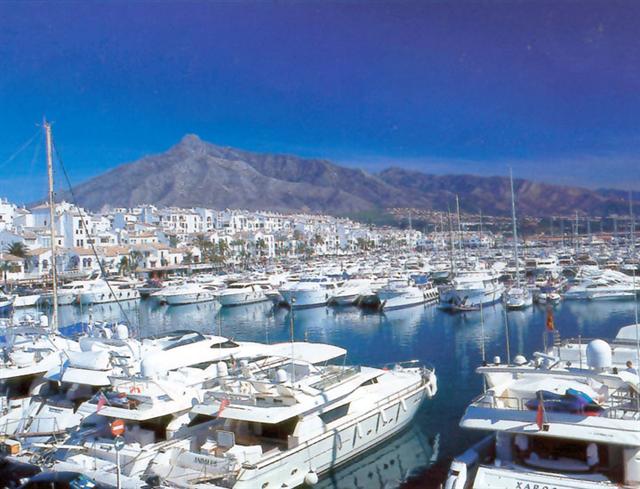The beaches, resorts and assorted tourist attractions of Europe are undergoing a quiet revolution; a transformation to match the foreign-holiday boom unleashed by cheap package tours in the 1960s. The Russians are no longer coming. They have arrived. And the Chinese are on their way in even bigger numbers.
With its pretty piazzas and ancient churches, Montecatini is a typical Tuscan town. But it is also one where the mayor has proposed that all street signs should be written in Russia’s Cyrillic script, reflecting an unprecedented invasion of pleasure-seekers from the east.
Across the rest of the continent, the picture is the same. Russians, Asians and Arabs are rewriting the rules of European tourism as newly enriched tycoons and middle-class beneficiaries of the world’s booming economies buy properties and take up beach space once jealously guarded by northern Europeans.
Outbound tourists from western Europe and the United States have remained fairly static in recent decades but the numbers going in the other direction are startling. Take China, where a travelling boom has marched in step with the country’s vertiginous economic growth. Five million making foreign visits in 1996 became 60 million by 2010. Over the same period, 12 million visitors from Moscow, St Petersburg and the rest of Russia multiplied into almost 40 million.
As the eurozone (and Britain) wonders where sustained economic growth is going to come from, in the depressing aftermath of the banking crisis, governments overseeing flagging economies in southern Europe are pulling out all the stops to attract non-EU visitors with cash to spare. Countries such as Portugal, Cyprus and Spain have even offered residency permits to foreign house buyers to energise their property markets.
Joannna Leverett of Savills estate agents said there were several trends. “Russians are still buying in the south of France, Tuscany, Turkey. Buyers from the United Arab Emirates, Kuwait and Qatar have started buying in Turkey as well as the south of France. Marbella remains popular. They tend to buy large villas in serviced resorts. Americans continue to buy in Italy and France. Chinese are buying newly built apartments in Paris and London, but here it’s related to education and visas and less about tourism,” she said.
In the context of the eurozone crisis, a knockdown sale of assets appears to have begun. Last week the emir of Qatar bought six Greek islands for £7m, continuing a trend started by King Fahd of Saudi Arabia when he fell in love with Marbella in 1974. The king spent up to two months on the Costa del Sol every summer and he was joined by much of the Saudi court and many other Middle Eastern princes. Each royal visit was said to pump £60m into the local economy.
Marbella is still a magnet for visitors from the Middle East. The Saudi royal family owns the 200-acre Nahda complex that includes a clinic, a mosque and a replica of the White House, among other palaces. Sheikh Abdullah al-Thani of Qatar owns Málaga football club. But Russian wealth has become a bigger player in recent years.
Jelena Cvjetkovic, also of Savills, said that wealthy Russians were still looking for “trophy assets” and last year one had bought a private property for more than £40m in St Tropez. The latest fashion, she said, was for the very wealthy to add a countryside property to their seaside property. “We are seeing a surge of interest in Tuscany. They already have a seaside property and now they want a countryside property with a vineyard. A lot of these sales are carried out privately, but I have heard through lawyers of many going for £30m-£40m,” she said.
Meanwhile, the emerging Russian middle class – the merely well-off as opposed to the super-rich – are transforming the mass tourism market and adding to their own, more modest property portfolios. In 2011 Russians were the largest group of visitors to Europe, with 24.6 million, followed by the US with 20.6 million. Next is China with 4.7 million, Canada with 4.2 million and Japan with 4.1 million.
Many of those visitors are also buying. Mike Bridges, editor of International Residences, a Russian property magazine, said: “The majority of Russian buyers are now from the middle classes with an average budget of €500,000. They normally don’t need mortgages and pay cash. The Russian economy is doing very well, and the middle class is immense.”
As a result, large Russian communities are emerging in north-east Spain, Montenegro and Cyprus where there are Russian shops and services on offer. Bridges said: “Russians are looking for places with direct flights to St Petersburg and Moscow and they need a lot of interpreters at the other end. Developers normally need Russian-speaking staff. Bulgaria and Montenegro are popular because of the linguistic similarities, but Spain has become very popular because of the cheap property prices.”
Russians now account for 9% of the property market on the Costa del Sol, ahead of the Germans on 7%, but still way behind the British on 35%.
The new influx has had its darker side, amid accusations of mafia activity and corruption. In Cyprus, a court in 2010 bailed a Russian accused of spying in the US, giving him the opportunity to escape. In Spain, Russian businessmen and Spanish politicians have been accused of collaborating in corruption.
But as the spending capacity of the new powerhouses of the global economy inexorably grows, the new kids on the block will become more numerous. And if Russians are the present, the Chinese are the future. Young Chinese people are steadily moving from organised group travel to independent travel, making reservations and buying tickets on the internet and going beyond the major tourist attractions.
The UN has predicted 100 million Chinese tourists will travel somewhere in 2020. Europe, or at least the continent’s most alluring spots, are set to become a playground for the new rich of the east. It’s all a long way from the Costa Brava in 1970.


